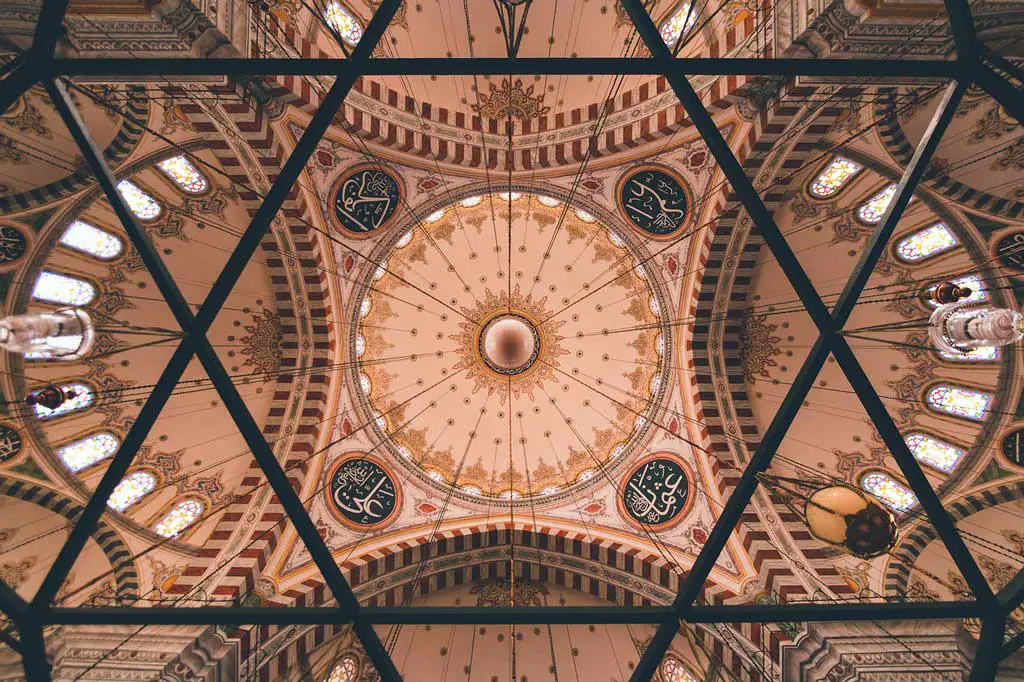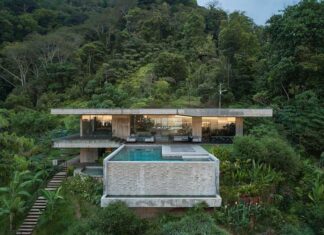Balance is one of the most important principles in architecture design as it helps architects create unique structures in terms of both functionality and visuality. There are different types of balance: symmetrical, asymmetrical and radial balance. In this article, we’ll explore these 3 types of balance in architecture, provides different building examples for each one, and talk about some key factors that contribute to achieving harmony in design.
Types of Balance in Architecture
As we mentioned above, there are three main types of architectural balance as symmetrical, asymmetrical and radial balance. Great designs generally come to the fore with their harmony in different scales like material, facade design and mass scale.
Thousands of unique architectural examples are designed with basic design principles and balance can be seen in most of them. Below, we’ll respectively explain what is symmetrical balance, asymmetrical balance and radial balance.
1. Symmetrical Balance

The simplest type of balance is symmetrical balance, also known as formal balance. Symmetrical balance occurs when elements on one side of a central axis repeat themself on the other side as a mirrored image.
Since it provides a sense of stability, order, and dignity, you can find plenty of symmetrical balance examples in classical architecture as well as European architectural styles such as Renaissance and Gothic.
2. Asymmetrical Balance

The more complex one asymmetrical balance occurs in architecture as visual harmony rather than mirroring elements around an axis. Unlike symmetrical architecture, asymmetrical harmony adds some dynamism and movement to buildings.
Modern and contemporary architects have mostly preferred to create visual balance because it is suitable for more relaxed, natural and informal forms. You can see those examples of asymmetrical balance in skyscrapers, organic structures, museum buildings, and more building types.
3. Radial Balance

Occurring around a central point, radial balance is a design technique, which is often used in circular or round-shaped buildings. For instance, domes, rotundas, and circular amphitheaters feature radial balance.
Architects prefer radial balance to provide buildings with characteristics such as unity and wholeness. Therefore, it is suitable for buildings that symbolize unity, centricity and completeness.
Examples of Balance in Architecture
Achieving architectural harmony makes a building pleasing to the eye. There is a great number of famous buildings that accomplish creating a balance in different ways. Some produce this balance with opposite colors on a facade while others have repeated building elements.
Symmetrical Balance Examples
# Parthenon of Athens

The Temple of Parthenon, built in Athens in the 5th century BC, is one of the most famous examples of symmetrical balance in architecture. Dedicated to the goddess Athena, the structure has a keystone value in classical Greek architecture.
Parthenon has two central axes intersecting each other perpendicularly. The axes of this rectangular building create two identical halves. Each side features a row of Doric columns, reliefs, metopes and friezes.
Read Also: Parthenon of Athens in Acropolis | Facts & Architecture
# Notre Dame Cathedral

Another exciting example of symmetrical balance is Notre Dame Cathedral in Paris, France. The Cathedral of Notre Dame, built between the 12th and 13th centuries, is a masterpiece of Gothic architecture.
The building was designed as two identical halves developing on either side of a central axis. Notre Dame has many arches, spires, rose windows, towers, and beautiful ornaments, conceiving a magnificent dignity.
Examples of Asymmetrical Balance
As mentioned above, we mostly come across asymmetrical architecture examples in modern and post-modern times. Because, developing building techniques, new materials, technologies, and architectural movements have paved the way for asymmetry in architecture as a trend.
# Burj Khalifa

It is very difficult to achieve architectural balance in high-rise buildings. However, Burj Khalifa, the tallest building in the world with a height of 828 meters (2717 feet), manages to have harmony in its architectural design.
The building has a central spire tapering upward, forming a dynamic mass. It is also adorned with horizontal patterns that balance the vertical stance. By this means, we see a skyscraper designed with vertical balance.
# Fallingwater House

The famous American Architect Frank Lloyd Wright designed the Fallingwater House in 1935 in Pennsylvania, USA. Expanding towards a forest with its large terraces, the house exhibits an impressive harmony with nature.
Fallingwater House, located on a waterfall, creates an asymmetrical balance using terraces of different sizes and vertical walls. Furthermore, it also features a visual balance between the natural context and its own architecture.
Read Also: Analysis of Fallingwater House by Frank Lloyd Wright
Factors That Contribute to Balance in Architecture
Architectural balance has been one of the basic methods that architects use to create impressive structures for thousands of years. However, there are different ways of achieving this balance and dozens of factors can help architects design balanced structures.
In this section, we’ll provide some primary factors that contribute to balance in architecture. These factors are proportion, symmetry as well as mass and volume.
Proportion
The first factor is proportion which refers to the size and scale of the building elements as well as how they establish a relation to each other and the whole structure. A balanced design is one that features an eye-pleasing and harmonious proportion in building elements.
Symmetry
Another factor that contributes to balance in building design is symmetry. It refers to the view of repetitive elements on either side of a central axis. Symmetrical buildings have two identical sequences of building elements, with the same size, placement and shape.
Mass and Volume
Balance in architecture is a matter of design decisions on the upper scales like mass and volume as well as details. Mass indicates the physical weight of a building, while volume indicates the amount of space it occupies.
The way of creating a balance with these architectural parameters is that distribute mass and volume evenly, without a space that is too heavy or too light.

To sum up, there are some crucial factors that architects should consider when creating balanced architecture. Proportion, symmetry, mass and volume play important roles in balance. Besides, the ratio of opacity and transparency, textures as well as colors are among other factors that contribute to the balance in architecture.
Conclusion
In conclusion, balance plays a crucial role in architecture, and contributes to creating visually pleasing structures. Therefore, if a building is designed in a balanced way, it can be more pleasing to the eye and be highly acclaimed. There are three main types of balance in architecture and each type can be seen in different famous structures throughout architecture history. These are:
- Symmetrical balance
- Asymmetrical balance
- Radial balance
While many factors can contribute to achieving harmony in building design, some of them may have a greater effect, such as symmetry, proportion, colors, transparency, mass and volume. Implementing these principles in balance at all scales and stages of the architectural design process, architects and designers can create unique projects both visually and functionally.
Thanks for reading this article. Please support us with your comments and shares. Have a balanced life!
Read Also: Rhythm in Architecture: Finding Harmony in Design
Frequently Asked Questions
A: Architectural balance is related to how to use the visual completeness and distribution of elements to create a harmonious and pleasing appearance.
A: Balance is quite important in architectural design as it helps to give characteristics to a building such as stability, order, dignity, unity, completeness and more. Balanced buildings are more catchy and aesthetically eye-pleasing as well as function effectively and efficiently.
A: Using some techniques and architectural design principles like proportion, symmetry, colors, mass and volume, architects can achieve balance in design.
A: 3 types of balance are symmetrical, asymmetrical and radial balance.
A: Some famous building examples that manifest architectural symmetry are Parthenon in Athens, Villa la Rotonda, the Taj Mahal, Notre Dame Cathedral, and Sheikh Zayed Grand Mosque.
A: Burj Khalifa, Fallingwater House, Heydar Aliyev Center, Bilbao Guggenheim Museum and Hagia Sophia are among the famous structures that demonstrate asymmetry in architecture.
A: Symmetrical balance refers to a design principle that ensures building elements are evenly arranged on either side of a central axis, while asymmetrical balance refers to harmony between building elements that are unevenly distributed.
Symmetry gives an impression of stability and order. Asymmetry, on the other hand, creates a sense of movement and dynamism.

















